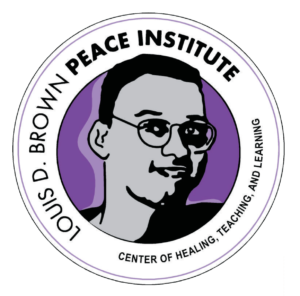About

Louis’ Story
Louis D. Brown was a 15-year-old sophomore in the fall of 1993. Louis looked forward to college, and was planning to pursue a PhD. He was an avid reader and interested in engineering. Louis often mentioned to his family and friends his long-term goal of becoming the first Black president of the United States and his commitment to making his community a more peaceful and just place.
Alongside his peers, Louis worked to challenge the negative stereotypes about youth in his neighborhood. He was deeply concerned with the ongoing violence he and his peers were experiencing. Louis couldn’t understand why adults were always blaming young people when bad things happen and only took the credit when good things happened. He feared that by the time he made it to the White House, he would be running this country with the same old blood. And it was his belief that “if true peace is to happen, it would be up to [his] generation regardless which side of the street they [came] from.”
Louis was caught in a fatal crossfire shootout near his home in Dorchester, Massachusetts in December of 1993. During that time, there were no resources in Boston for survivors of homicide victims which left Louis’ family leaving the hospital empty-handed and empty-hearted.
Louis’ murder was high-profile. The media speculated about why a teenager was murdered in broad daylight. Was he in a gang? Was it a drug deal gone bad? When it was reported that Louis was, in fact, an honor student killed on his way to a Teens Against Gang Violence meeting, there was a major shift in public opinion. This shift in opinion led to an outpouring of support. But for Louis’ family, this begged the question of what the response to their family would have been if he were in a gang or selling drugs? Would the same resources be poured in?

The Start of the Louis D. Brown Peace Institute
Clementina Chéry co-founded the LDBPI in 1994 to honor his legacy and continue the peacemaking work he led.
Our work began with The Peace Curriculum, to teach the value of peace to students and ways to deal with murder, trauma, grief and loss. The Peace Curriculum was recognized by the United States Dept. of Justice for its contribution to Boston’s juvenile crime reductions, and as an innovative and effective primary prevention strategy in the report “One City’s Success Story.”
In 1996, the City of Boston, the Boston Police Department and other local government agencies began referring survivors of homicide victims to Clementina to guide them through the aftermath of the murder of a loved one. Clementina witnessed the way families were denied access to needed support and services if their loved one was “known to police” or had a “criminal history”. She worked to ensure that all survivors were treated with dignity and compassion regardless of the circumstances.
With support from the Boston Public Health Commission, Clementina founded the Survivors Outreach Services (SOS) program to deliver consistent and coordinated services to impacted families. Today, the Louis D. Brown Peace Institute serves as an integral partner to the City of Boston and other cities across the country in transforming society’s response to homicide.
